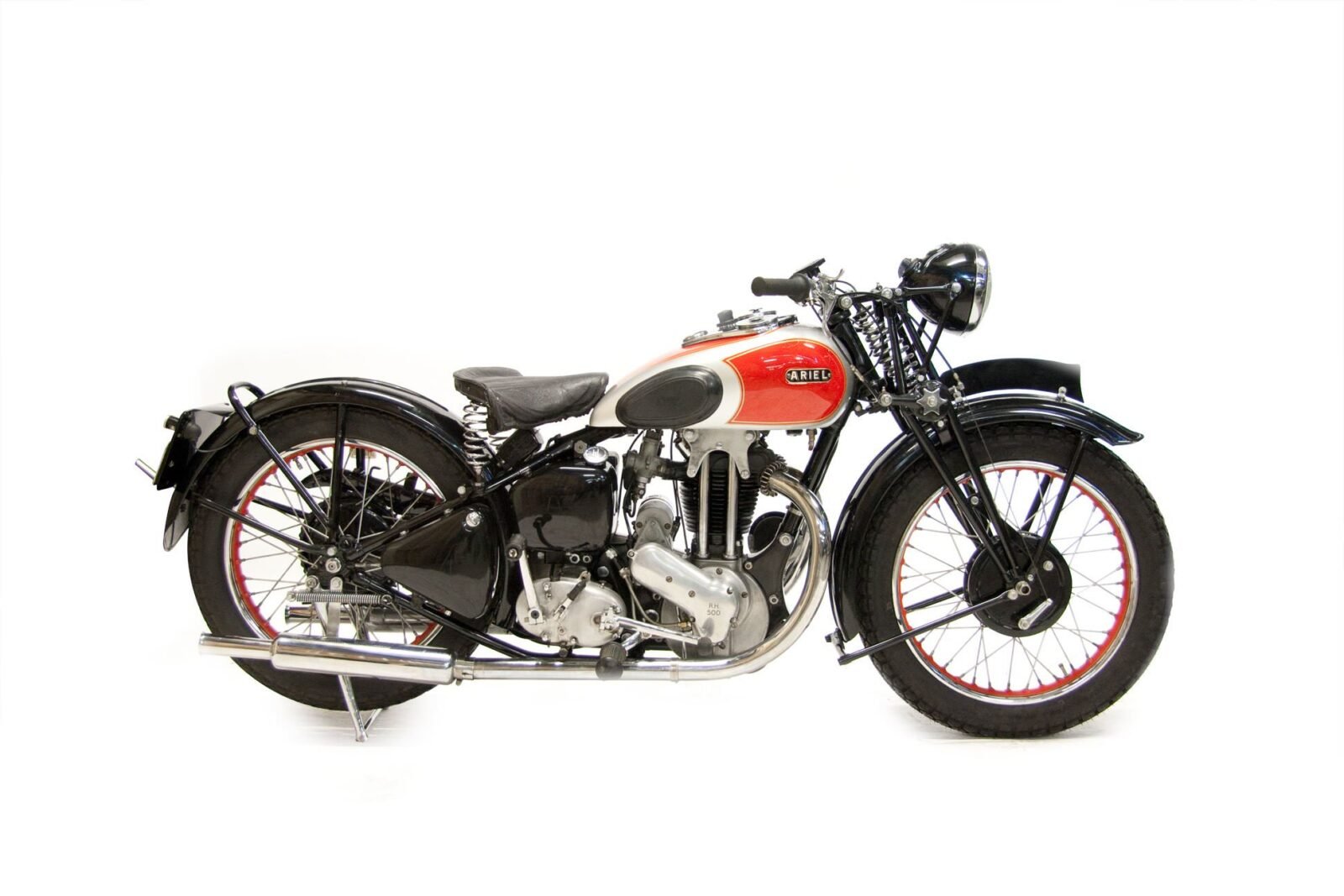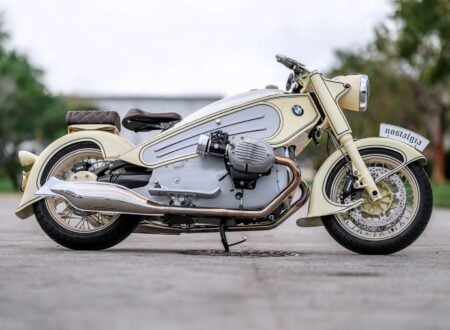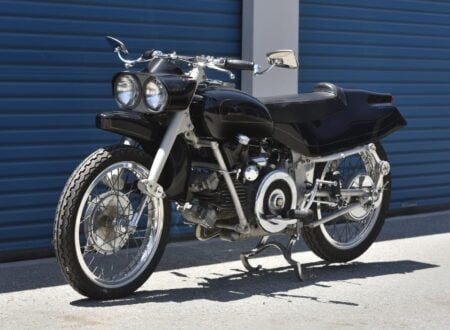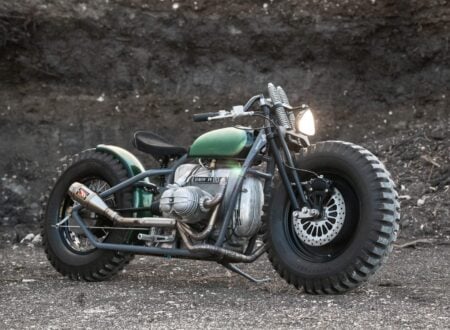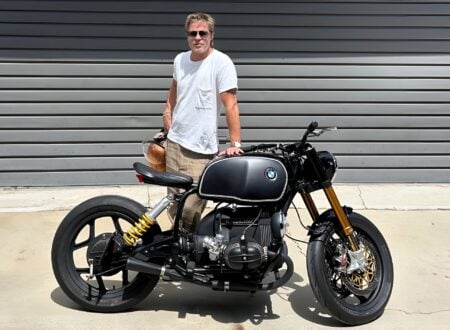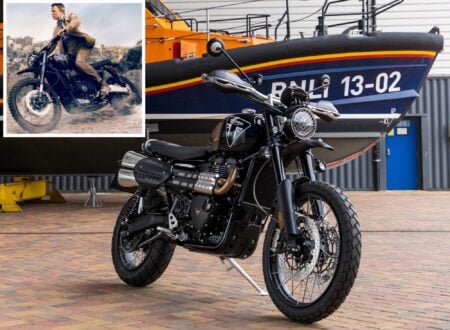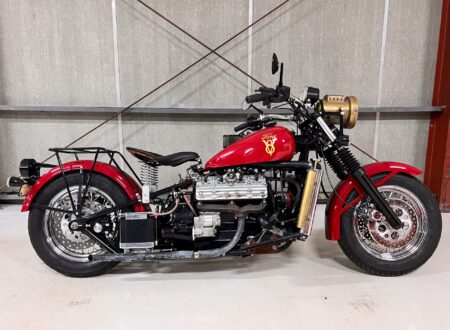Val Page, Ariel, and the Red Hunter
The story of the Ariel Red Hunter began when motorcycle engineer Val Page joined Ariel in 1925, having previously served his apprenticeship with the renowned British engine maker J. A. Prestwich (i.e. J.A.P.). Page had designed the V-twin engines that had powered such iconic British motorcycles as the Brough Superior SS80 and SS100, famous as the motorcycle owned and ridden by T.E. Lawrence, better known as “Lawrence of Arabia”.
By 1926 Val Page had been promoted to the role of Chief Designer and he had set about creating a new range of motorcycles, and also a new OHV single cylinder engine which would subsequently become the heart of the Ariel Red Hunter.
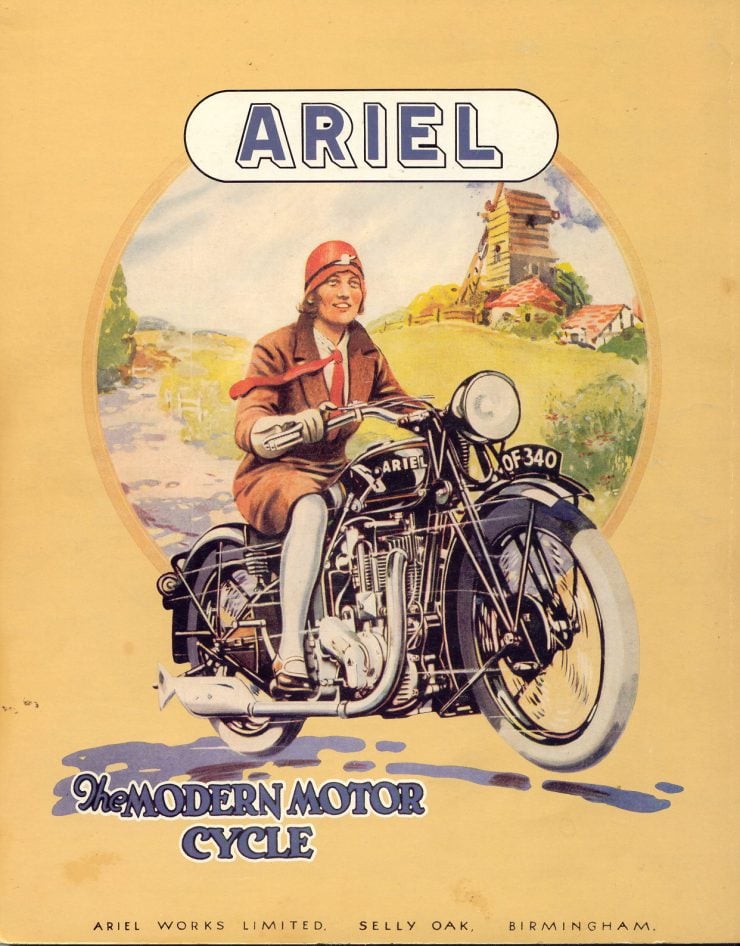
It took until 1927 for a suitable motorcycle to be designed to make good use of Page’s new 500cc OHV single cylinder engine, but even then the engine itself did not yet feature a rocker cover and so was noisy and had a habit of spraying a little oil here and there. For intrepid 1920’s gentlemen motorcyclists this was simply something that gave the bike a bit of character, but for intrepid lady motorcyclists this was not a great selling point. A rocker cover was subsequently designed and fitted which made the Val Page single cylinder quieter and far less prone to oiling the rider’s accoutrements.
In the period just prior to the Wall Street Crash Ariel was a manufacturer who tried to appeal to every nuance of motorcycle taste. This meant that he company made and offered an extensive range of motorcycle models in four stroke and two stroke, side-valve and pushrod overhead valve, and a sloper model simply because the sloping engine had become something of a fashion fad.
As the economic depression began to bite home however such “Roaring Twenties” indulgence could not be sustained and in order to remain viable Ariel was going to need to rationalize its model range, and ensure that Ariel motorcycles were going to be the ones that people would continue to purchase rather than the offerings of Ariel’s competitors.
A Black Ariel Becomes the Red Hunter
It was in 1928 that a freelance motorcycle designer named Edward Turner came knocking on Ariel’s door to see if they were interested in a new and innovative motorcycle engine he had designed. The engine was rather more complex than the single cylinder engines Ariel had been marketing up to that time, it was the “Square Four“, which consisted of two twin cylinder engines joined together by their central geared flywheels.
The head of Ariel, Jack Sangster, was interested in both the engine and the designer of the engine, and so it was that Edward Turner joined the design team of Ariel in 1929 working under the leadership of Val Page.
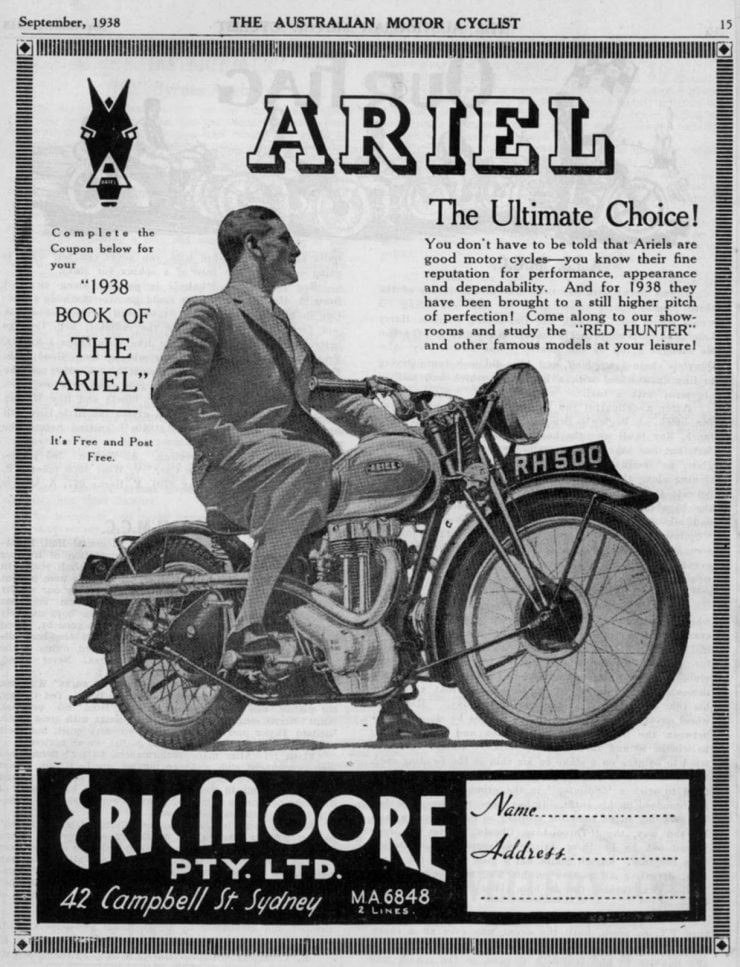
Val Page left Ariel in 1932, the year the company went bankrupt but was purchased by Jack Sangster who kept it going. Page moved across to Triumph where he took up the role of Chief Designer. Edward Turner became Chief Designer at Ariel that year and he took a long hard look at the company’s models with a view to reducing the model offerings, and making those fewer models more attractive to consumers.
The main engine he decided to keep in production was the Val Page designed single cylinder OHV, which was made primarily as a 500cc, with a 350cc created by sleeving down the 500cc, and a 250cc for those who wanted to remain under the British tax limit.
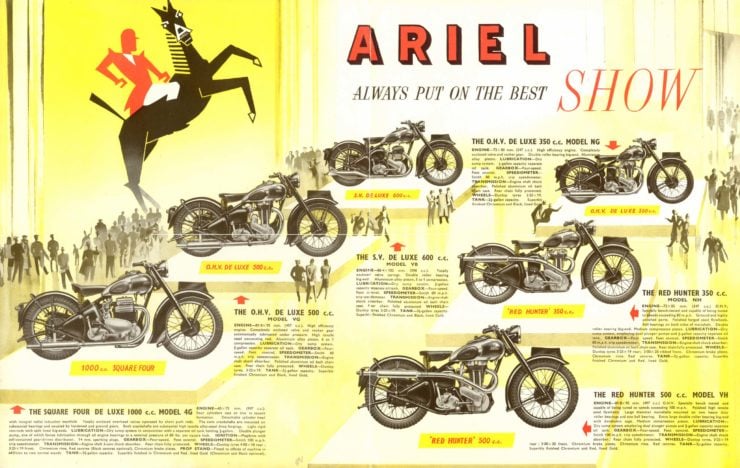
That Val Page 500cc single was originally made in a double valve version (i.e. four valves for the single cylinder) but that level of complexity was done away with for the rationalized Depression era model line-up and so all the single engines were fitted with conventional single valves (i.e. two valves per cylinder). The other engine Edward Turner kept in production was his own Square Four, initially as a 500cc in 1931, and then in progressively larger capacities from 600cc to 1,000cc.
It might be said that there is a little bit of magpie in every human being: people are attracted to shiny new things, nickel or chrome plating makes a boringly black motorcycle one that immediately catches the eye and a splash of bright red paint is near guaranteed to draw the “magpie” in checkbook wielding customers like moths to a flame.
Edward Turner believed that getting away from Ariel’s tasteful but horribly boring black was going to be one of the secrets to selling motorcycles in the dark days of those depression years. For 1932 Edward Turner installed an interestingly high specification Val Page 500cc OHV double valve single cylinder engine in a rigid single downtube frame with girder front forks and brightened it up with a chrome plated fuel tank replete with instruments and a red painted panel with the Ariel name on it.
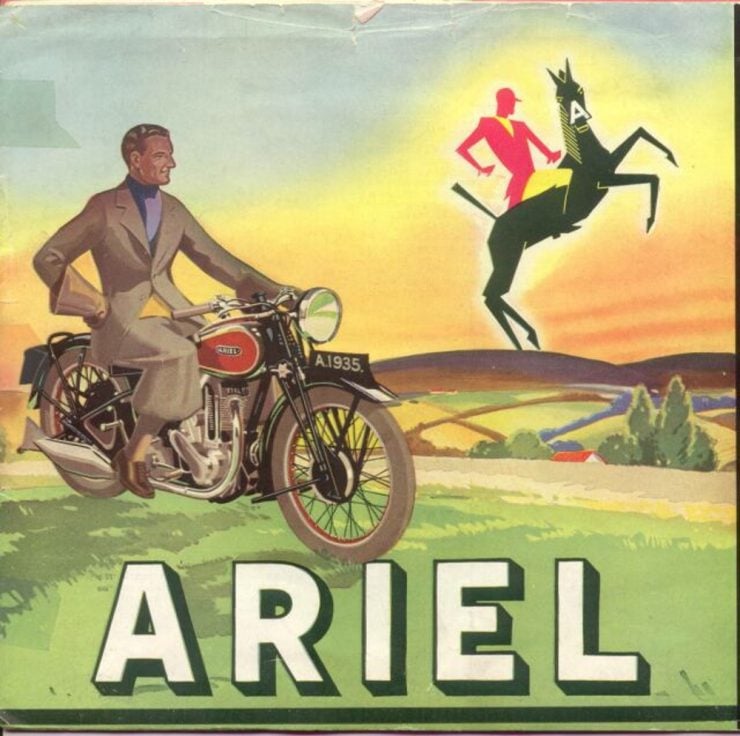
This bike was named the “Red Hunter”, conjuring up images of fox hunters on horseback racing through the English countryside with their hounds to reduce the population of lamb and chicken eating foxes. The Red Hunter featured a dry plate clutch connecting the engine to a Burman four speed gearbox. The electrics were by a Lucas “Magdyno” which combined a magneto with a dynamo (i.e. generator) and which proved to be a solid and reliable unit.
To enhance the interest in their new Red Hunter, Ariel provided two types of piston as an option; one being a 7.0:1 standard compression piston enabling the engine to produce 28hp, and a 7.5:1 high compression piston which required a high octane fuel mix of 50/50 petrol and Benzole and which increased power sufficiently to give the bike a claimed top speed in excess of 90 mph.
The Ariel Red Hunters of the 1930s
The engine of the Ariel Red Hunter featured a cast iron cylinder mated with an aluminum alloy vertically split dry sump crankcase. The crankshaft was supported by two large main bearings lubricated by a plunger type oil pump from the separate oil reservoir: Actual engine capacity was 30 cu. in. (497cc) and the Red Hunter could be ordered with single or twin exhausts either high or low mounted.
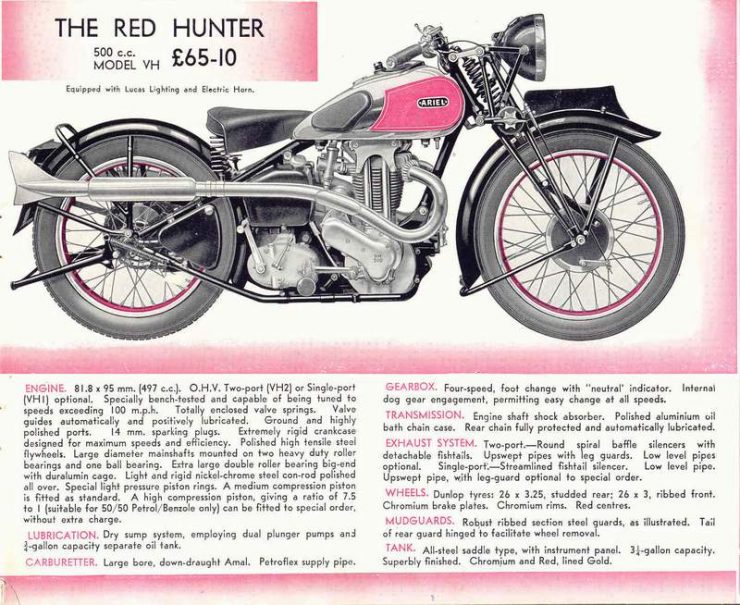
By the end of the 1930s the Red Hunter’s specifications were as follows:
Engines: 497cc/30 cu. in. single cylinder with bore of 81.8mm and stroke of 95mm or 350cc single cylinder, dry sump. Carburetors were large bore down-draft Amal. The mainshaft was supported on two roller bearings and one ball bearing. Big ends were mounted on two ball bearings races in duralumin cages. Oiling was provided by twin plunger pumps and the engine featured polished flywheels, con-rods, and combustion ports. Compression ratio for 1939 was 7.5:1 and power output was 26 hp @ 5,800rpm.
Transmission: Multi-plate wet clutch and Burman four speed manual gearbox (right foot shift) with an engine shaft shock absorber, oil bath chain primary drive and chain final drive.
Frame and suspension: Rigid single downtube frame with front girder forks.
Brakes: SLS drum brake front and rear.
Wheels and Tires: Front, 26″ x 3″, Rear 26″ x 3.25″. Chrome brake plates, red centers.
Electrical system: Lucas Magdyno magneto and generator combination.
Fuel tank: 12.3 liters, 2.7 gallons (Imperial), 3.25 gallons (US).
Curb weight: 168kg, 370lb.
Top Speed: Approximately 85mph (137 km/hr).
Competition models were equipped with a crankcase under-shield, competition tires, nail catchers, high clearance fenders, detachable rear wheel, chain guard, and fabric rather than cork clutch. The Lucas Magdyno was replaced with a BTH magneto and the smaller fuel and oil tanks from the 350 NH were fitted to the competition 500 VH. A small number of racing 500cc engines were fitted with aluminum-bronze cylinder heads: only about ten bikes are thought to have been so fitted.
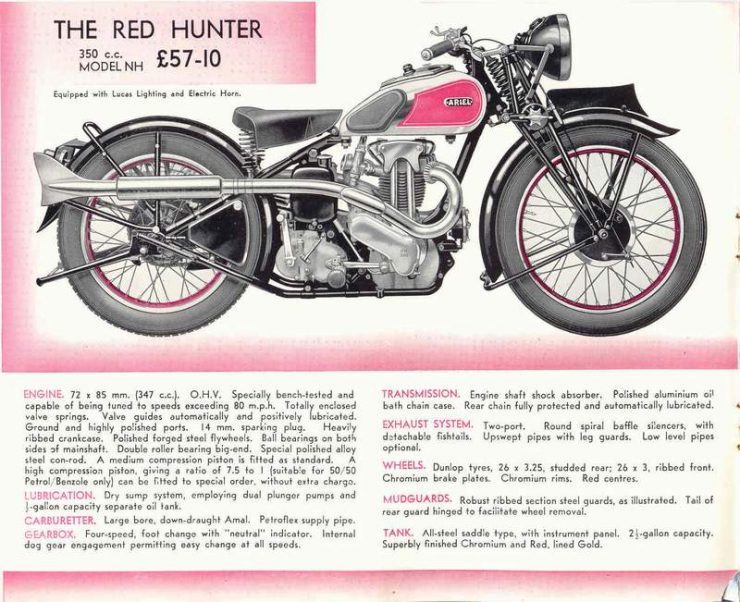
The Wartime Ariels
Once World War 2 was underway Ariel was forced to cease production of motorcycles for the civilian market and instead devote all its energy into the manufacture of dispatch rider motorcycles. These were based on the 350cc Red Hunter but modified for military dispatch rider use. This model was the Ariel W/NG and production began in 1940.
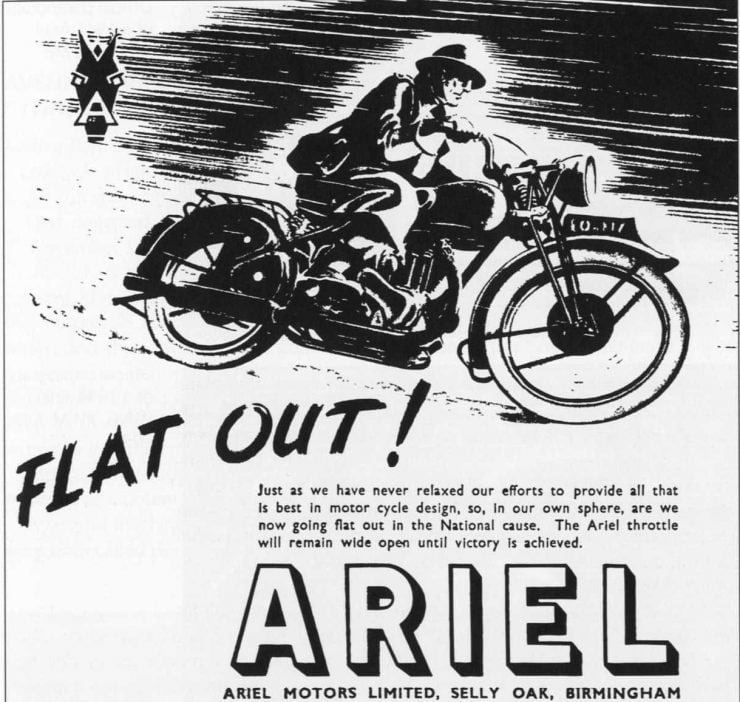
The W/NG was fitted with a trials frame and the bike was given additional ground clearance to make it more suited to off-road use. These bikes were fitted with panniers, a pair of tool boxes, and the headlight was fitted with a black-out mask. These Ariels gained a reputation for rugged dependability and thousands of them were made and deployed.
The Post-War Red Hunters
By 1945 both the British people, and British industry, had suffered the double whammy of the Great Depression of the 1930s and the Second World War which had taken up the first half of the 1940s. The result was that most manufacturers had been unable to devote any attention to the creation of new models and that when Ariel managed to get back into production in 1946 they initially did so producing the same models they had been making in 1939.
By that stage however Edward Turner had left Ariel and gone to work at Triumph, where he had designed the engine considered to be his masterpiece: the Triumph “Speed Twin” parallel twin.
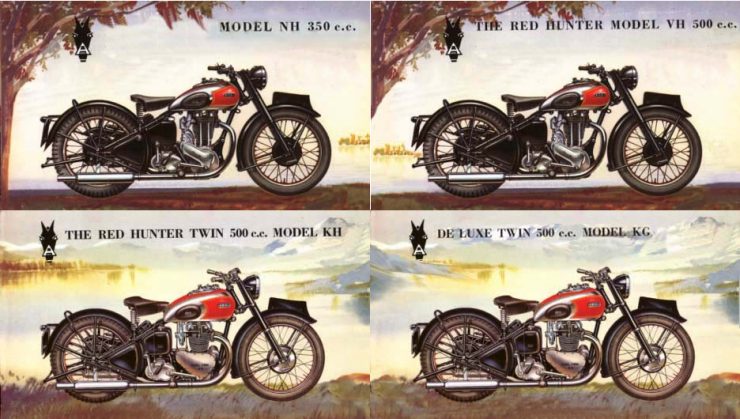
Ariel recognized just how good the parallel twin was and lost no time in creating their own. Ariel made their own twin as a 500cc and began publicizing it in 1946, although the motorcycles were not able to be put into production until 1948.
This meant that Ariel’s Red Hunter model line-up comprised two singles, the 350cc NH and the 500cc VH, and two parallel twins, the 500cc KH, and the De Luxe 500cc KG. The KG De Luxe parallel twin was fitted with a slightly lower compression ratio engine to ensure the smoothest operation while the KH featured a slightly higher compression ratio as befitted a more lightweight sport bike.
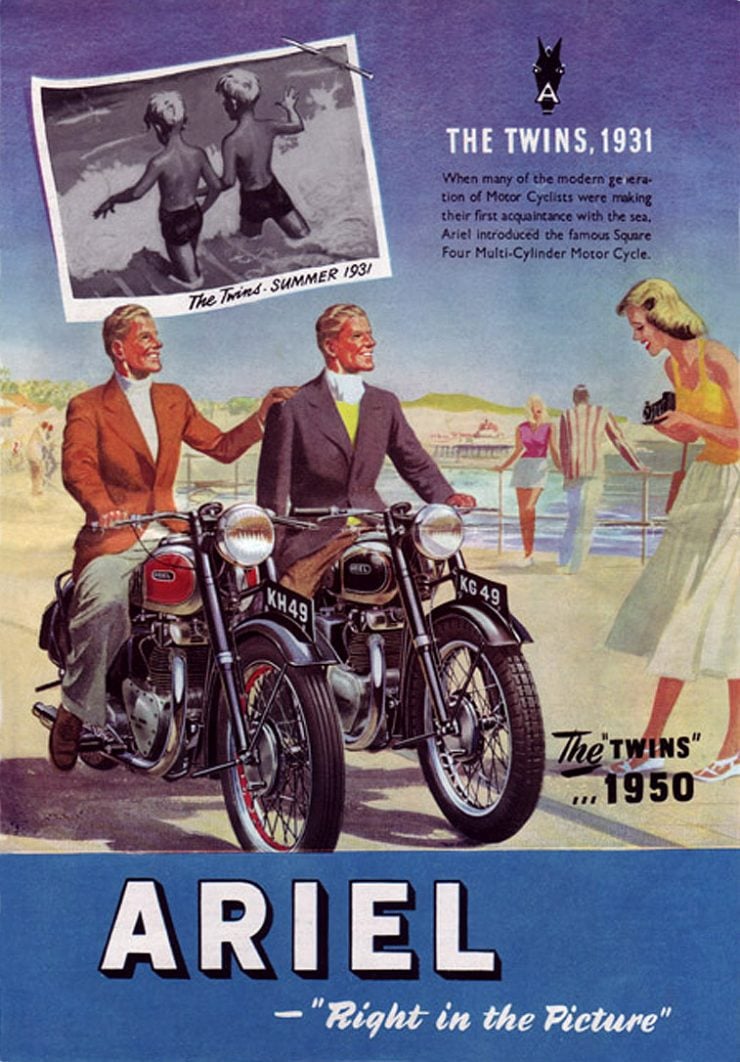
The post-war models continued with the same specifications as the pre-war models although for 1946 telescopic forks could be specified instead of the girder forks and these were the first Ariel motorcycles provided with this option. The rear suspension remained rigid however with the Anstey Link plunger type rear suspension being introduced as an option in 1947.
For 1952 and 1953 Ariel offered a version of the Red Hunter equipped with an all alloy engine: this was the VHA Red Hunter and because of its rarity went on to become a much sought after collector bike.
In 1954 the Red Hunter was further modernized and much improved with the fitting of a new duplex frame complete with swing arm rear suspension. The 1954 model also saw the 500cc VH model fitted with an aluminum alloy cylinder head, and the 350cc NH being similarly equipped in 1956. 1956 was also the year that the Red Hunters were fitted with full width alloy hubs.
In the early 1950s a motorcycle racer named Sammy Miller brought the Ariel name into the public spotlight. Miller predominantly rode Ariel motorcycles beginning in 1951 in the 250cc class of the Ulster Grand Prix. Sammy Miller’s most famous bike was his 500cc Ariel HT5 with registration number GOV 132, which he had extensively lightened and modified. Miller’s long list of competition successes included his being British Trials Champion eleven times in a row, and his being five times winner of the Scottish Six Day Trial.
Sammy Miller’s association with Ariel ended in 1964 when Ariel were absorbed into BSA, effectively bringing Ariel to an end.
https://youtu.be/PxwWlP_27hI
Conclusion
Ariel were purchased by rival motorcycle maker BSA during the war in 1944. The company entered the postwar era retaining its independence for a time but the BSA influence progressively reduced the Ariel motorcycle’s attractiveness. For example by 1954 the drop dead gorgeous chrome and red paintwork had been replaced with a dull maroon that made the bikes look reminiscent British Railways rolling stock, a move that has been likened to clothing a supermodel in drab overalls.
The Ariel Red Hunter ceased production in 1959, at a time when the British motorcycle industry was trying to find new direction but were bogged down in traditional ideas of what a British motorcycle should be. These ideas were about to be hit by the motorcycle invasion from the Land of the Rising Sun, an assault that Britain’s motorcycle makers would prove to be unable to withstand.
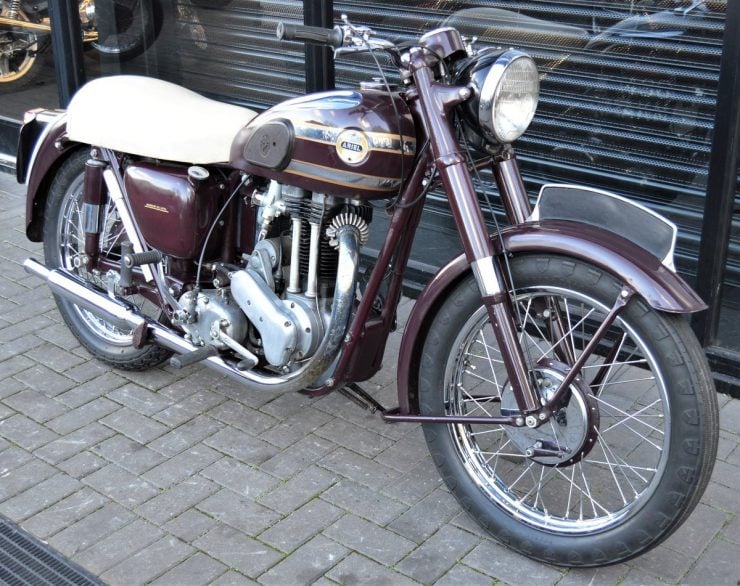
The Ariel Red Hunter stands out as one of the greatest of Britain’s single cylinder motorcycles. Given that Royal Enfield are currently manufacturing traditional style British motorcycles it is not unreasonable to imagine that a new model Ariel Red Hunter could be created with an expectation that it would sell.
It would need an electric starter, disc brakes, and would need to be clothed in the Edward Turner livery of chrome, red and black: it would then indeed be a supermodel of a motorcycle, a bike that would have its strongest appeal to the retro motorcycle riders, a light and nimble British alternative to the Harley-Davidson.
Photo Credits: Ariel, Bonhams, RM Sotheby’s.

Jon Branch has written countless official automobile Buying Guides for eBay Motors over the years, he’s also written for Hagerty, he’s a long time contributor to Silodrome and the official SSAA Magazine, and he’s the founder and senior editor of Revivaler.
Jon has done radio, television, magazine, and newspaper interviews on various issues, and has traveled extensively, having lived in Britain, Australia, China, and Hong Kong. The fastest thing he’s ever driven was a Bolwell Nagari, the slowest was a Caterpillar D9, and the most challenging was a 1950’s MAN semi-trailer with unexpected brake failure.

